
 |
| —*ADVERTISEMENT— |
 |
| CODE UPDATE | ||||||||||
| Significant Code Changes to the 2012 International Plumbing Code | ||||||||||
| (The information below is excerpted from the Significant Changes to the 2012 International Codes series.) | ||||||||||
| The thresholds at which indirect waste piping is required to be trapped have been increased and an exception has been added to address clear waste water. Click to continue reading more on this update to the 2012 PMG Significant Changes. |
||||||||||
| The Significant Changes to the 2012 International Codes series has been developed by the International Code Council and published by Cengage Learning to assist code officials, architects, engineers and other construction professionals transitioning from the 2009 to the 2012 editions of the International Codes. The series offers a comprehensive yet practical analysis of hundreds of the most critical changes from a very active code development cycle. Each color publication contains: revised code text; a summary of each change listed; in-depth change analysis; and a detailed photo, illustration or table for each change to deepen understanding. Coverage reflects provisions with special significance, including new and innovative design ideas and technologies, modern materials and methods of construction, and current approaches to safety and stability. Authored by ICC code experts, these useful tools are "must-have" guides to the many important changes in the 2012 International Codes. | ||||||||||
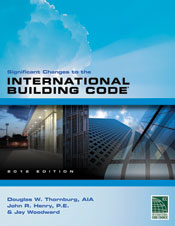 |
 |
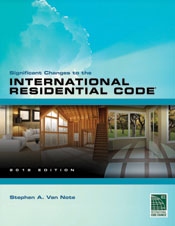 |
 |
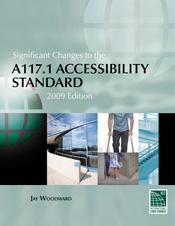 |
||||||
| —*ADVERTISEMENT— |
 |
| CODE BASICS |
| Fire, Based on the 2009 International Fire Code |
| (The information below is excerpted from the 2009 Building Code Basics series.) |
| The IFC requirements for interior finish materials installed on walls and ceilings are based on the rate of flame spread and smoke production, or the material’s ability to contribute to flashover. Different fire test methods are permitted by the IFC, and each test has its own criteria for assessing the relative fire risks of materials being evaluated.
Click to continue reading more on this excerpt from the Building Code Basics: Fire, Based on the 2009 IFC. |
| The Building Code Basics series based on the 2009 International Building, Residential and Fire Codes and 2012 Building, Residential and Green Construction Codes explains requirements using non-code language to help you understand the material or explain it to others. Technically accurate and easy to understand, these are the perfect resources for builders, owners, students, plan reviewers, inspectors and permit technicians. Each book contains: 150-plus color diagrams and photos that help readers visualize correct code application; numerous real-world examples; content that pulls together related information from various code sections into one convenient location; and a glossary of code and construction terms to clarify key terminology as it applies to the code. |
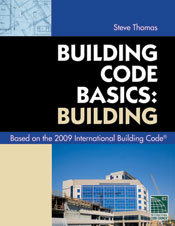 |
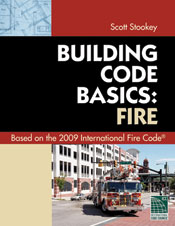 |
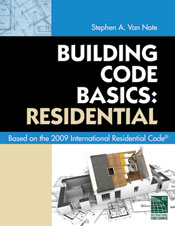 |
||||
 |
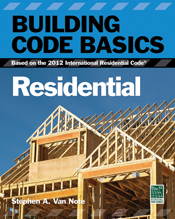 |
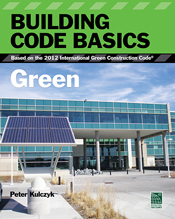 |
| —*ADVERTISEMENT— |
 |
| CODE Q&A |
| 2009 International Residential Code – Building and Energy Provisions |
| (The information below is excerpted from the 2009 International Codes Q&A series.) |
| A question regarding additions in Section 302 is raised and answered: Q: In our city, there are many very old homes that are located within a few feet of the side lot lines. Quite often we see permit requests for additions off the rear of these dwellings that are in line with the original home. This will usually place the proposed addition just 2 or 3 feet from the lot line. Although the original homes have exterior walls that are a couple of feet from the lot lines, and usually full of windows, our department requires the addition to comply with the exterior wall and opening protection based on location on lot, which typically means one-hour-rated exterior walls and often no window openings. Our position is that the original structure was constructed based on a much older code, or no code at all, but we would like to limit the hazard by complying with the code for the rear addition. Is this a proper enforcement of the provisions in the code? Click to get an answer to this code question and others by reading more on this excerpt from the 2009 IRC Q&A. |
| Get expert answers to hundreds of the most frequently asked real-world questions. The 2009 Q&A series will assist engineers, architects, inspectors, fire and building officials, and plans examiners with finding answers to common code questions that arise during design, plan review, construction and daily code enforcement. Features: many new questions and answers; detailed photos, tables and illustrations that provide a clear understanding of both the intent and meaning of the code text; the relevant code section printed before the question and answer for easy reference; and discussion on a wide variety of topics including: accessibility, fire resistive construction, means of egress, building planning, foundations, fire protection systems, hazardous materials, plumbing and mechanical systems, prescriptive compliance method, determination of substantial damage, and much more. |
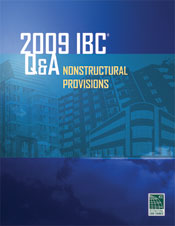 |
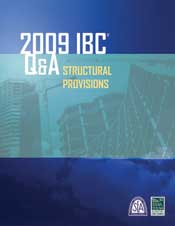 |
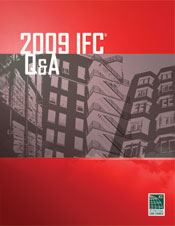 |
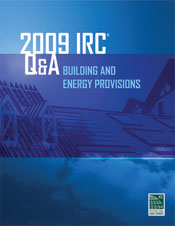 |
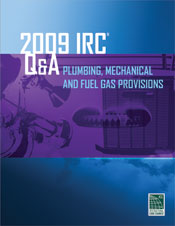 |
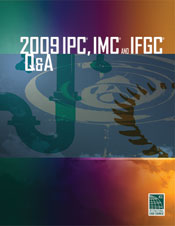 |
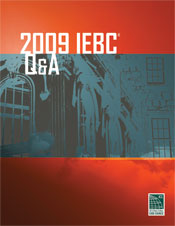 |
 |